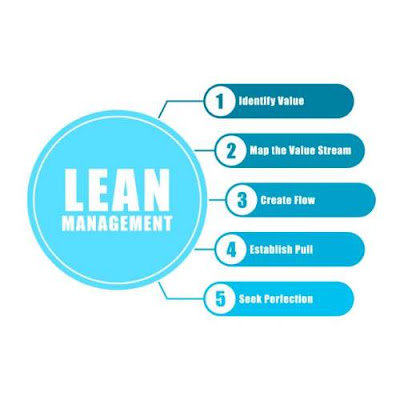 |
| Principle of Lean Manufacturing |
Lean Manufacturing is a management philosophy that is implemented because of this value. The major manufacturers use lean manufacturing to improves the efficiency of manufacturing and eliminate wastage, provide higher value quantity with higher quality to customers, and improve employee morale. But what is lean? In this blog post, we look at 5 key lean manufacturing principles and their benefits for both manufacturers and customers.
What is Lean Manufacturing?
Lean manufacturing is a series of applied processes and equipment that eliminate waste from production. Improved efficiency, effectiveness, and even profitability are all by-products of lean manufacturing.
In addition, lean manufacturing is an adaptation of the Toyota Production System (TPS) and its four principles. At its core, lean manufacturing is waste elimination and continuous improvement in quality and employee performance.
5 Key Lean Manufacturing Principles
1. Specify the value
What do your customers value? The price goes hand in hand with what customers are willing to pay for a product. When lean, identify what the value is to your specific customers. Questions to assess value include: What problems does my product offering solve? What specific product features do my customers want to pay for?
Always be sure to set the price from the customer's point of view (not yours) and from the product family. Lean Manufacturing Tools states that a product or service is only valuable for 5% of our time. In an article creation article on lean thinking, the author continues:
"The rest of the time we spend in futile activities; we are waiting, working, transporting, moving and hosting other useless things that customers don't consider something they are paid for should do."
2. Identify the value stream
Any process and material required to make a product accessible to customers create value streams. Lean thinkers map value streams to analyze delays, inefficiencies, and production limitations, as well as value-adding steps.
Any move that is indicated to create value must be abolished. Flagged process steps that create no value due to technology or manufacturing limitations to become opportunities for improvement.
 |
| Manufacturing Improvement |
3. Establish Flow
Once the stages of value-creation are identified, they must occur in sequence. Flow ensures smooth progress from the beginning of production to the finished product delivered to the customer. This lean manufacturing principle ensures that the product will run smoothly for your customers. The goal of creating value flow is to have continuous, synchronized production.
4. Pull the Price
Lean manufacturing principles are key to eliminating excess waste. The bridge installation is no different. Once the flow starts, customers will start pulling value from the next upstream activity. The bridge models at a reasonable time or on-demand. Ideally, production does not begin until customer orders have been received. The bridge eliminates work-in-progress and wastes from incorrect production forecasts.
5. Strive for perfection
The ultimate lean manufacturing principle is seeking perfection. Lean thinkers look for opportunities to improve each part of the price flow. Identify and remove the root causes of issues from your production processes to target perfection. This principle is a group effort and everyone needs to run it - from the production floor to the C-suite.
Remember, whenever lean always chasing perfection!
Other benefits of Lean
When it comes to lean, manufacturers believed that only people would benefit. Lean Manufacturing eliminates practices that enhance value for customers. In an ASME article, 5 Lean Principles Every Engineer Should Know, contributor Mark Crawford writes, from lean to pigeon-holed to construction. The Crawford team suggests implementing lean thinking to improve efficiency, inventory management, and client interaction.
Additionally, Lean drives high quality and increases customer satisfaction. "When waste is removed from customer service processes, delays, inconveniences, mistakes, and costs are also eliminated," CompDDD Inc. Summarizes.
Likewise, lean principles apply to workforce management. Lean manufacturing is made up of five key principles. Lean construction removes faulty machinery and equipment. Consequently, Lean increases workplace safety by reducing the possibility of machine breakdown.
Quick Links:-
Acceptance criteria for visual inspection of weld defects.
What is Internal Combustion Engine (ICE)?
Post a Comment
Please do not enter any spam link in the comment box.